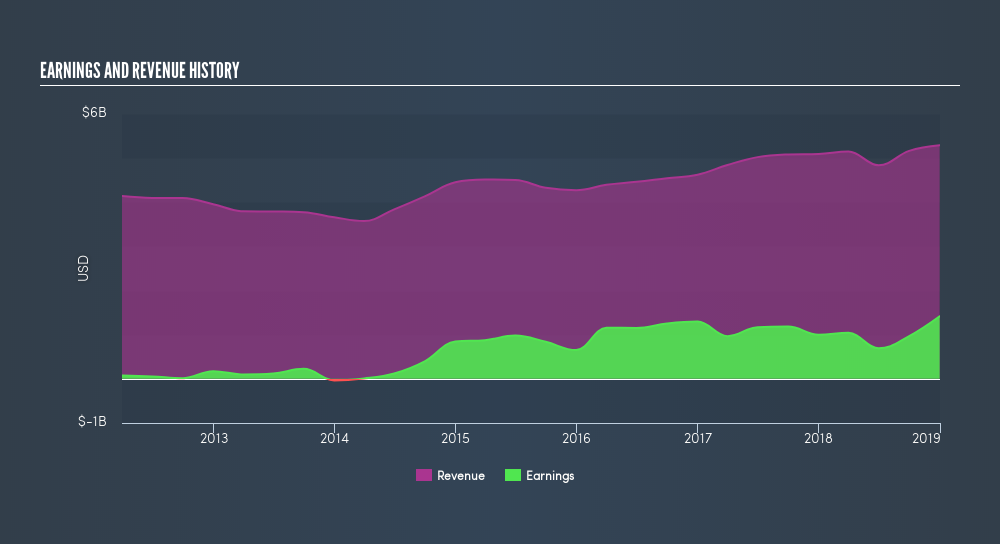- United States
- /
- Entertainment
- /
- NasdaqGS:EA
Does Electronic Arts Inc.'s (NASDAQ:EA) 41% Earnings Growth Reflect The Long-Term Trend?

For investors, increase in profitability and industry-beating performance can be essential considerations in an investment. Below, I will examine Electronic Arts Inc.'s (NASDAQ:EA) track record on a high level, to give you some insight into how the company has been performing against its long term trend and its industry peers.
View our latest analysis for Electronic Arts
Commentary On EA's Past Performance
EA's trailing twelve-month earnings (from 31 December 2018) of US$1.4b has jumped 41% compared to the previous year.
Furthermore, this one-year growth rate has exceeded its 5-year annual growth average of 23%, indicating the rate at which EA is growing has accelerated. What's the driver of this growth? Let's take a look at whether it is merely a result of industry tailwinds, or if Electronic Arts has seen some company-specific growth.

In terms of returns from investment, Electronic Arts has invested its equity funds well leading to a 27% return on equity (ROE), above the sensible minimum of 20%. Furthermore, its return on assets (ROA) of 16% exceeds the US Entertainment industry of 7.0%, indicating Electronic Arts has used its assets more efficiently. And finally, its return on capital (ROC), which also accounts for Electronic Arts’s debt level, has increased over the past 3 years from 23% to 23%. This correlates with a decrease in debt holding, with debt-to-equity ratio declining from 29% to 19% over the past 5 years.
What does this mean?
Electronic Arts's track record can be a valuable insight into its earnings performance, but it certainly doesn't tell the whole story. While Electronic Arts has a good historical track record with positive growth and profitability, there's no certainty that this will extrapolate into the future. You should continue to research Electronic Arts to get a better picture of the stock by looking at:
- Future Outlook: What are well-informed industry analysts predicting for EA’s future growth? Take a look at our free research report of analyst consensus for EA’s outlook.
- Financial Health: Are EA’s operations financially sustainable? Balance sheets can be hard to analyze, which is why we’ve done it for you. Check out our financial health checks here.
- Other High-Performing Stocks: Are there other stocks that provide better prospects with proven track records? Explore our free list of these great stocks here.
NB: Figures in this article are calculated using data from the trailing twelve months from 31 December 2018. This may not be consistent with full year annual report figures.
We aim to bring you long-term focused research analysis driven by fundamental data. Note that our analysis may not factor in the latest price-sensitive company announcements or qualitative material.
If you spot an error that warrants correction, please contact the editor at editorial-team@simplywallst.com. This article by Simply Wall St is general in nature. It does not constitute a recommendation to buy or sell any stock, and does not take account of your objectives, or your financial situation. Simply Wall St has no position in the stocks mentioned. Thank you for reading.
About NasdaqGS:EA
Electronic Arts
Develops, markets, publishes, and delivers games, content, and services for game consoles, PCs, mobile phones, and tablets worldwide.
Excellent balance sheet with proven track record.


